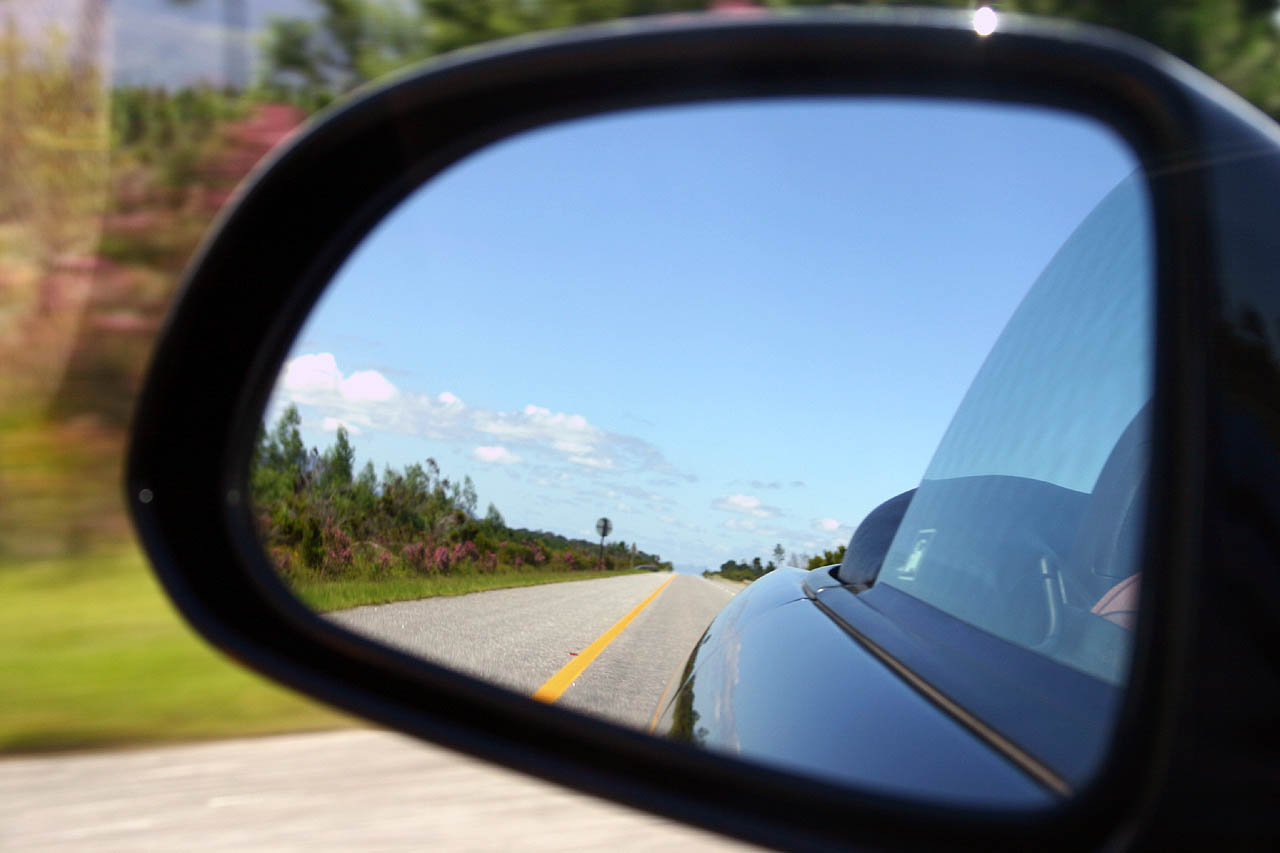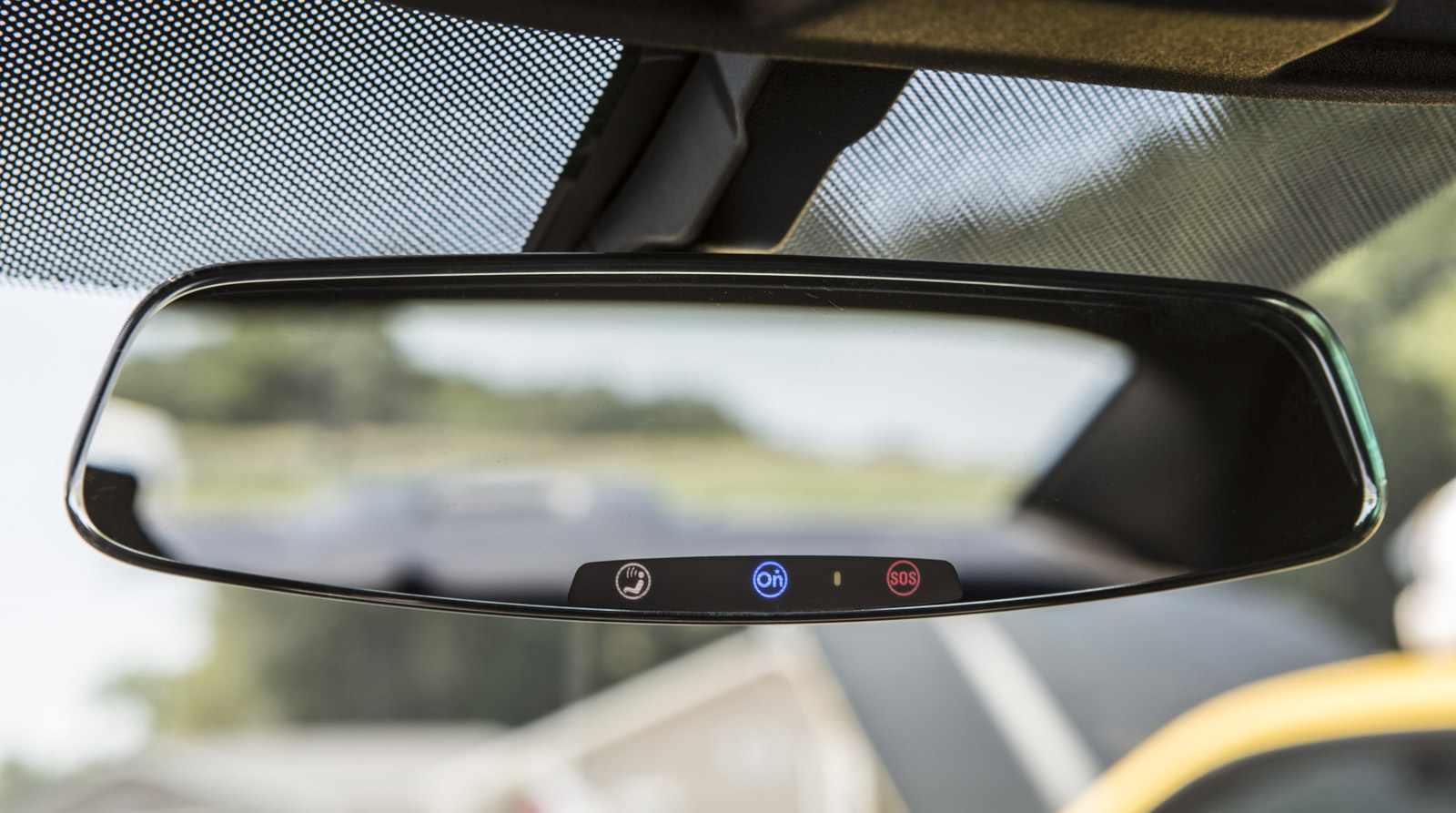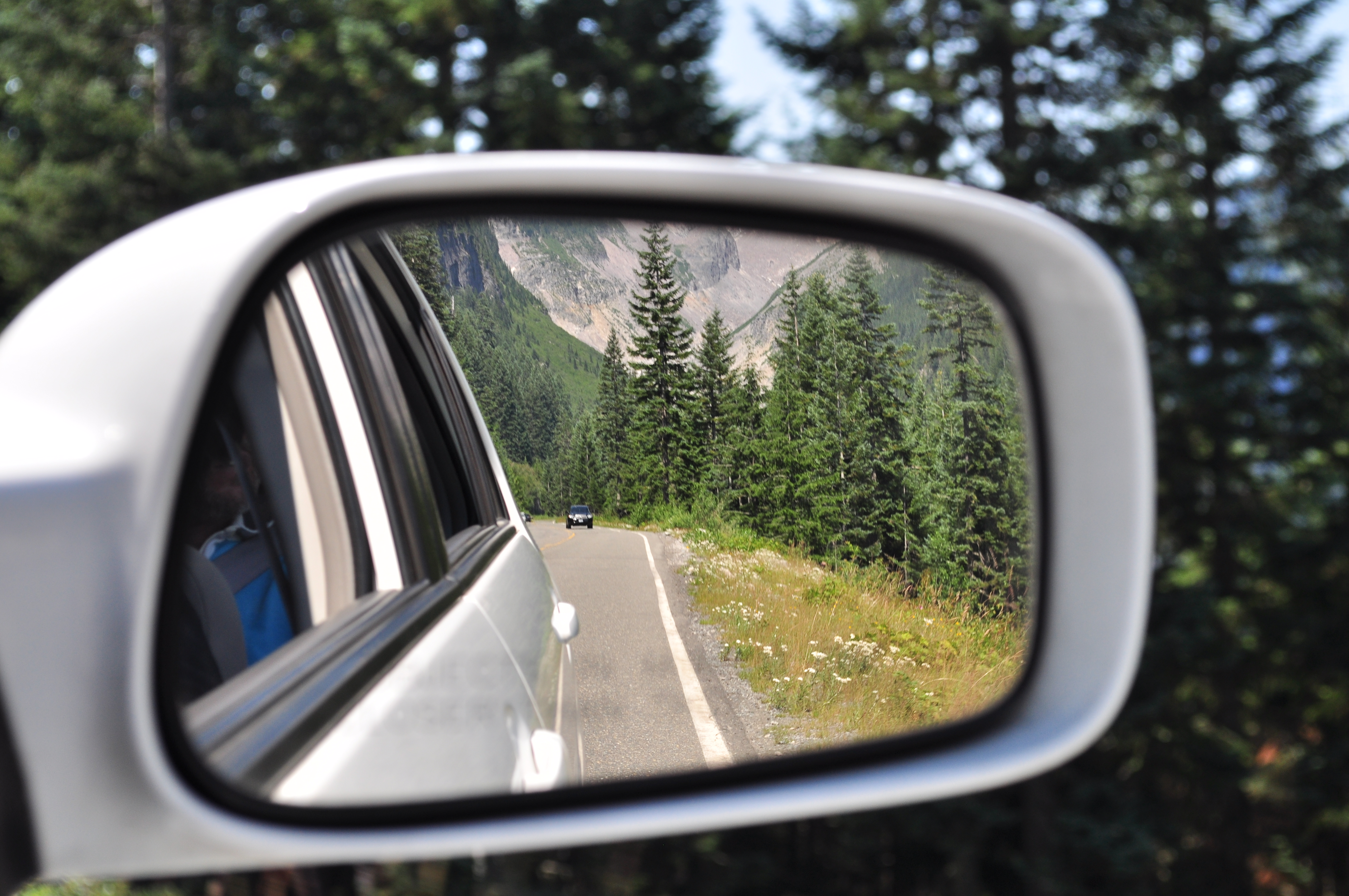Rear-view mirror
A rear view mirror is a reflective surface to facilitate observing the traffic behind the action and make the drive a vehicle safer.
The aim is always to make the largest possible angle behind the vehicle visible. Therefore, convex curved mirrors are often used to make a larger area visible track this but slightly smaller.
A basic distinction in the vehicle interior mirror and exterior mirrors.
- 2.1 Blind Spot
- 2.2 Wide-angle mirror on motor vehicles
- 2.3 Reversing or Einparkautomatik
- 2.4 Other Functions
Interior mirror
Interior mirrors are usually only makes sense if where the view through the vehicle to the rear is possible, so usually for passenger cars also in buses interior mirror are mounted, but serve to have the passengers in view. For cars the mirror is mounted in the middle between the driver and passenger seat at the windshield on a ball joint, so that it can be individually adjusted to the driver.
Abblendfunktionen
Modern interior mirrors are dimmable, to avoid in the dark glare from behind propelled vehicles; they can be tilted to a position in which the light is refracted by the mirror glass so that only a small part is reflected to the viewer, do not allow to change the field of view.
When auto-dimming interior or exterior mirrors two mounted in the rearview mirror LDR sensors measure the difference in brightness between the car ahead and rearward traffic area. An evaluation electronics then darkens the built-up with electrochromic mirror glass if required as far as suggesting that the glare from the rear traffic is canceled.
Electronic rear view mirror
Audi has announced the R8 e -tron an electronic rear view mirror, to be produced in small series from the end of 2012. The digital interior mirror is a display with a screen diagonal of 7.7 inches and a horizontal resolution of 1280 pixels in AMOLED technology, which reproduces the images of a rear view camera and shall be produced by Samsung.
Other Features
- If a vehicle rain sensor or light automatic, so these are often mounted on the back of the attachment point of the interior mirror and respond to either raindrops or darkness.
- In modern taxis, a remote display with the fare indication of the taximeter is often integrated into the rearview mirror.
- For the aftermarket display solutions for navigation devices which are integrated into the mirror surface of the interior mirror exist.
- Especially in the USA is an integrated in the interior mirror electronic compass popular as there address names are often based on the alignment of a road.
- For upscale vehicle equipment, there are interior mirrors that measure the current alignment on the motor or sensor combinations and stored positions can recover from memory function or vehicle key example -dependent.
- When using a rear-facing baby seat in the car's back seat can about the interior mirror in combination with a baby seat mirror the child's face can be observed
Mirrors
The exterior mirrors and side mirrors are the left and right at the vehicle to the outside and give the largest width of the vehicle. To reduce damage to other road users, they are now often foldable; they can folding in the window with stronger contacts or if struck by other vehicles by spring force and must be manually repositioned. Had you previously down boost the window to change the level setting, so today almost all rear-view mirror from the inside either mechanically or electrically adjustable. In the mechanical adjustment there is for each mirror a small joystick, which forwards the adjustment with three Bowden cables to the mirror. The electronic adjustment both mirrors can be adjusted by setting switches on the driver's side, this is especially during the adjustment of right side mirror of advantage. The design of the mirror is also of great importance in reducing the value of the vehicle.
If a trailer you attach to a vehicle that is wider than the towing vehicle, the attachment of additional mirror with a longer reach mandatory. It is important that the mirrors are attached to vibrate, to ensure clear visibility.
Especially for trucks, additional mirrors are often used to allow a view down to the curb.
Heated mirrors are also in use for the winter.
Blind spot
While one sees directly behind the vehicle when rear-view mirror, this is not possible in the exterior mirrors. This area - as well as parts of the side areas - can not be seen, is called the blind spot. To avoid or reduce this, be in some vehicles in which it occurs easily, that people stand behind the vehicle, such as buses, also used cameras to help the driver can see the blind spot on a small screen in the vehicle. For use in the dark part, glare-free work lights are mounted on the rear-view mirror, the only way to illuminate the blind spots on both sides of the vehicle.
Wide-angle mirror on motor vehicles
For many years as a volunteer to be attached Modelparts wide-angle mirror in the motor trade are available, their purpose is indirect - to enlarge the field of view of the driver - ie only viewable mirror. Such mirrors are often installed in modern vehicles already factory, usually provide in a separate area next to the conventional mirror a second viewing area to where, as measured by the "normal" view in the mirror, reduced a larger section of the lateral and rear traffic is shown. These additional facilities are to be found in foreign, in cars partly on interior mirrors. In addition to the partitioned second viewing windows are also one-piece mirror with wide angle portion, but were then compared to the normal perception require a distortion for the purpose of enlargement of the area shown.
For lorries additional wide angle mirror since 2005 across the EU for newly coming into circulation model lines prescribed, since the secluded area for the driver so that the risk of accidents is particularly high, and higher than in smaller motor vehicles. Since January 2007, all new trucks must be equipped with additional wide-angle and close-proximity mirrors. As of March 2009, a retrofit requirement for all 2000 approved older vehicles over 3.5 tonnes gross vehicle weight applied since January 1.
Reversing or Einparkautomatik
Another novelty with respect to the mirrors is the so-called reversing or reverse gear or Einparkautomatik in the lower automatically the mirror in an optimal position to parking or maneuvering and thus provide a better overview, for example, in terms of curbs.
Other Features
A new extra safety feature is lane change assistant. They support the driver when changing lanes, for example, from a speed of 60 km / h Here, the area is laterally monitored behind the vehicle and the driver informed of an optical signal in the exterior mirror if the system detects another vehicle in the adjacent lane.










